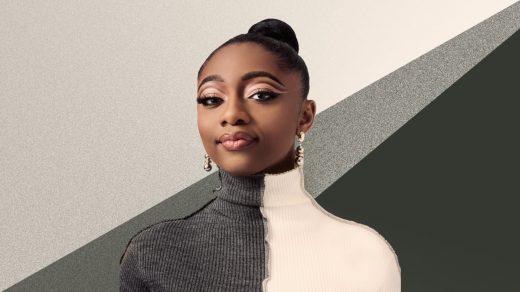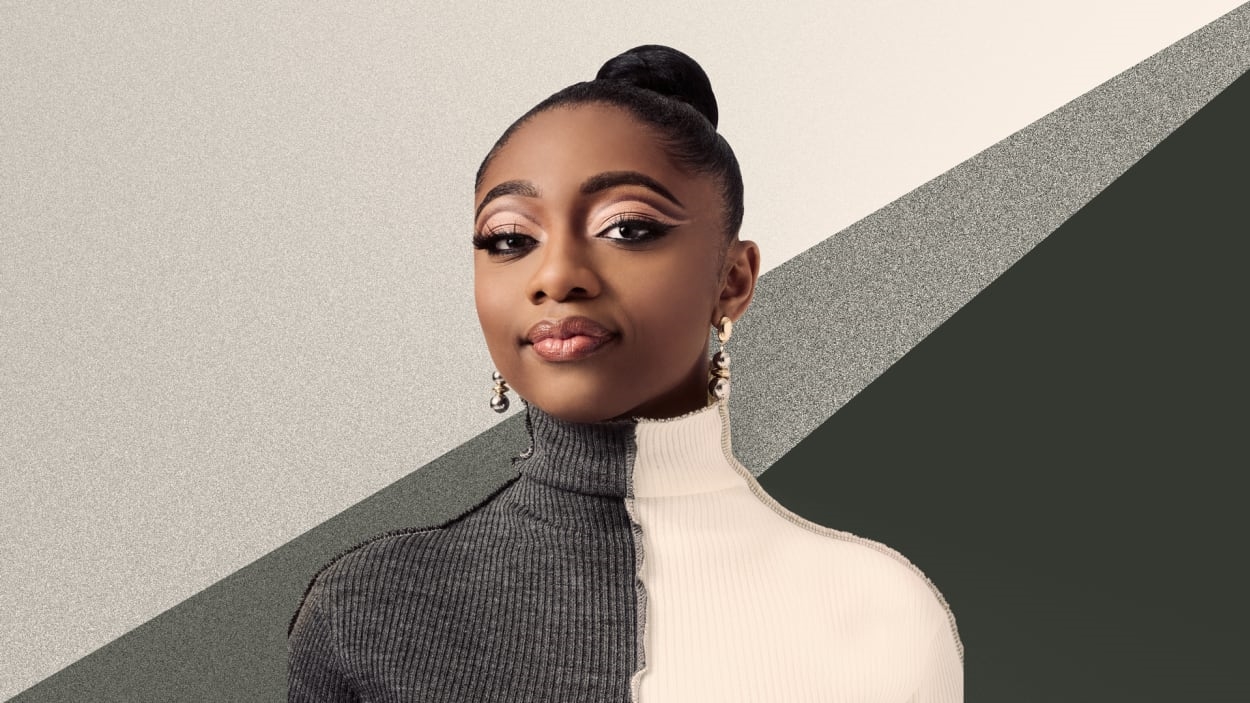Grammy nominee Samara Joy is more than just the first Gen Z jazz star
Last September, I was mindlessly scrolling through TikTok—as usual—when I came across a wistful, black-and-white video of a woman crooning Nancy Wilson’s “Guess Who I Saw Today.” What stopped my thumb in its tracks was this disconnect between how young she looked and the rich depth of her voice.
That 23-year-old woman was Samara Joy. Just two months after I came across her video, she was nominated for two Grammy Awards (Best Jazz Vocal Album and Best New Artist) to the surprise of no one except her.
“Me and the Grammys just seem so far away, like that’s just an event that I watch on TV,” Joy says in an episode of Fast Company’s podcast Creative Control. “I see all of these amazing stars. I watch the TikTok reviews of people’s outfits. That’s the extent of my relationship with it.”
Even outside the jazz scene, Joy has caught the attention of celebrities, including LaKeith Stanfield, who DM’ed her: “I love your voice so very much. Never stop creating.” When Regina King was asked what was getting her through the pandemic, she replied that it was Joy’s music.
“I discovered a young woman who just seems like Sarah Vaughn and Ella Fitzgerald are both living in her body,” King said. “When I watch her and listen to her, her name is Samara Joy and it brings me joy.”
Grammy nominations and celebrity cosigns aside, Joy’s talent so clearly speaks for itself. It’s partly why she struggles a bit with being lauded as the “first Gen Z jazz star.”
“When it’s added to the résumé, like, ‘Look how talented she is—she even has this many likes on social media.’ It’s just like, is that all I am?” Joy says.
Joy first began singing jazz while attending Fordham High School for the Arts in the Bronx, New York, and she carried that voice to State University of New York at Purchase. During her time in college, she not only won the Sarah Vaughan International Jazz Vocal Competition, but was also awarded the Ella Fitzgerald Scholarship in 2020. She recorded a video of herself singing Fitzgerald’s “Take Love Easy” as a thank-you to the foundation.
That video went viral on Facebook and catapulted Joy toward a record deal with the appropriately labeled Whirlwind Records, which released her first self-titled album in 2021 when she was fresh out of school. Joy eventually signed with the legendary Verve Records—the label that’s been home to such iconic jazz artists as Nina Simone, Stan Getz, Ella Fitzgerald, and Billie Holiday—to release her now Grammy-nominated album Linger Awhile, which, fun fact, she recorded in two days.
It’s evident that Joy would’ve enjoyed a successful career as a jazz singer regardless of going viral on social media. But she can’t deny the impact that it’s had, even though she has a somewhat tenuous relationship with the expectation of being a content creator.
In my interview with Joy, we unpack those hesitations, as well as her impact in introducing jazz to younger generations, and the challenges of her growing fame. Check out highlights below and be sure to listen to the full episode on Apple Podcasts, Spotify, RadioPublic, Google Podcasts, or Stitcher.
Singer first, content creator second
“TikTok is hilarious. I love watching people create on it. It reminds me of Vine [with] everyday comedians just making skits and stuff like that. Or even finding great vocalists on it, too. It’s amazing. But I wasn’t sure if I had a place on it. I was like, I gotta figure how to share and how to be a part of this world while still being myself and not letting it consume me or change what I do in order to be accepted by people on social media. On the other hand, I can’t help but be grateful because it led to this ongoing relationship with the Today show. They found a video of me online, and then I got to perform in the studio. I don’t think that would’ve happened as quickly as it did without them seeing me on TikTok organically.”
Leading a new class of jazz
“I was on tour with [jazz singer] Dianne Reeves, and she was like, ‘You’re bringing this music to another generation that is just not exposed to it.’ Even when I was thinking about a career in R&B or gospel, I [wondered], I don’t know if I could do it. I don’t know if that’s where my voice lies or where I feel like I could grow as an artist. So I’m conscious of the fact that I’m bringing [jazz] music [to people] my age. A lot of students come to the shows a lot, and they’re like, ‘It’s so nice to see you up there doing it because it makes me feel like I can do it’ and ‘I want to sing and be a part of this as well.’”
The challenge of recharging creativity
“The opposite side of having all the attention is everybody [says], Come here and tour there. I do need time to focus on music and recharge and remind myself of why I’m doing this in the first place. And it can’t happen when I’m constantly on the road. So I think that would be the biggest challenge, having the time and prioritizing the time off that I do have to rest and recuperate and practice.
Even though I strive to make each show as if it’s the first, sometimes when I sing the same song, I’m like, I don’t know if I can get anything more from this. I feel like I’m singing everything the same way. That’s when it just starts to kind of die, for lack of a better word.
I want time to play and to perform and sing for people, but also to feed my own artistic battery—so that I continue to explore and improvise and be conscious of music and ways to make things different or better.”
(49)



